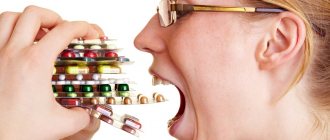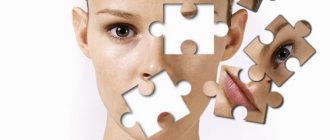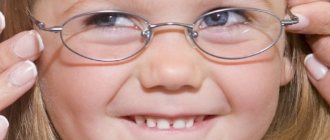Stupor
Stupor is a psychomotor disorder that is characterized by inhibition of motor activity, as well as speech and thinking.
Catatonic stupor
Catatonic stupor always occurs suddenly; it may be preceded by a pre-stuporous state or catatonic excitement. This type of psychomotor disorder can manifest itself with the following symptoms:
- Complete immobility or sharply slow movements.
- A symptom of waxy flexibility is the patient maintaining the given position, often uncomfortable, against the background of increased muscle tone.
- Air cushion symptom - patients in a horizontal position without head support can lie for a long time with their head elevated, as if on a pillow.
- Mutism - the patient is silent, does not make contact, does not respond to questions even with signs.
- Negativism. The patient unmotivatedly resists the requests and actions of others - either simply does not fulfill the requests, then we are talking about passive negativism, or performs the opposite actions - active negativism.
- Amymia is the complete absence of facial movements.
- Hood symptom - the patient pulls clothes, a towel, a sheet over his head like a hood, leaving his face exposed.
- Impulsiveness. Patients suddenly jump out of bed, may accidentally injure themselves or others, and then just as suddenly lie down again in an immobilized or fetal position.
- Echolalia - the patient repeats the words of others.
- Echomimicry is copying the facial expressions of others.
- Bumke's symptom - there is no pupillary response to pain.
With catatonic stupor, consciousness can be preserved or darkened.
Depressive stupor
Depressive stuporous state is a psychomotor disorder that develops against the background of severe depression and is characterized by motor immobility up to complete numbness. This psychomotor disorder is easy to distinguish from catatonic stupor: a frank suffering mask on the patient’s face is characteristic, symptoms of waxy flexibility, mutism, and negativism never occur.
Apathetic stupor
Psychomotor disorder in the form of apathetic stupor is characterized by the patient’s complete indifference to anything. The patient is immobilized, answers only the simplest questions, does not take care of himself, does not observe basic hygiene rules, and has a devastated facial expression. This condition may continue for several months.
Psychogenic stupor
This type of psychomotor disorder often occurs after severe mental trauma; its characteristic signs are complete motor numbness, an expression of tragedy and bewilderment on the face. Usually this condition does not last long and stops when the traumatic situation is resolved. This form of psychomotor disorders includes hysterical stupor - a passive defensive reaction that occurs in a tense environment that requires responsibility from a person and threatens his well-being. Characterized by immobility, passivity, silence of the patient; Sometimes patients grimace and take pretentious poses. This state can alternate with demonstrative behavior and psychomotor agitation.
Hallucinatory stupor
This psychomotor disorder develops when the patient’s attention is completely absorbed by vivid, exciting hallucinations. The patient is inhibited to the point of complete stupor, and an expression of horror appears on his face. Such episodes are short-lived, but tend to recur. Their cause is most often infectious psychosis.
Diagnostics
A personal conversation between a doctor and a patient is one of the ways to identify symptoms of psychomotor agitation
Since psychomotor agitation is not a separate disease, the task of professional diagnostics is to find the root cause of this pathology. To do this, a specialist can use the following techniques:
- Conversation with the patient.
- Carrying out tests.
- Modeling situations to search for a potential stimulus.
Psychomotor agitation
The most common types of psychomotor agitation are catatonic, manic, hysterical, hallucinatory-delusional, hebephrenic.
- Catatonic agitation is characterized by uncoordinated, impulsive, mannered, monotonously repeated movements, increased talkativeness of the patient, even to the point of incoherence. This psychomotor disorder is often accompanied by repetition of the actions of others; behavior is devoid of rationality. Grimacing is typical; facial expressions do not correspond to emotional experiences. A separate category is lucid catatonia, in which the state of catatonic excitement is combined with mental automatisms, hallucinations, delusions, but consciousness remains preserved.
- Manic agitation is caused by excessively elevated mood; the interconnectedness and purposefulness of movements are preserved, the patient’s actions are correct and logical, loud, accelerated speech and occasional loud cries are characteristic. Moriah (behavioral regression) often occurs. In severe cases, speech completely disappears.
- Hysterical excitement is a condition that is always provoked by some mental factor. The patient's behavior is always demonstrative, mannered, theatrical, and when attracting the attention of others, the symptoms worsen.
- Hebephrenic agitation is a fairly typical disorder, which is characterized by foolishness and a sharply elevated mood. Patients behave senselessly, shout out phrases with neologisms, their movements are pretentious, and an abundance of laughter and jokes evokes opposite emotions in those around them. Patients may mimic those around them, grab clothes, pester, and jump ridiculously. This state of excessive gaiety is often replaced by crying, sobbing and cursing.
- Hallucinatory-delusional arousal is a condition that reflects the content of the patient’s hallucinatory experiences. Patients may experience joy or fear, hide, wave their arms, shake off something, run away, etc.
Treatment
Patients with a confirmed diagnosis of psychomotor agitation are referred for further treatment to a specialized medical institution. Particularly aggressive behavior characteristic of patients requires the provision of emergency assistance. First of all, it should be aimed at preventing the situation from developing into a dangerous scenario, when the patient and the people around him may be injured or even die.
After calling an ambulance, it is necessary to direct efforts to achieve the goal before its arrival - to prevent the patient from escaping or attempting suicide. To do this, you need to remove potentially dangerous objects. The actions and words of others should not irritate the patient or cause his anger, they should be soothing. If he is extremely excited and mobile, it is necessary to use the most effective means - restriction of his movements, temporary fixation. In such an event it is necessary to involve at least 3 physically strong people. Assistants need to approach the patient from the back and from both sides at the same time, fix his arms on his chest, then grab his knees, lay him on the bed, carefully secure him on it with towels, and hold him until the doctors arrive. The described manipulations must be performed with the utmost care to prevent injury to the patient.
Emergency care for psychomotor agitation is provided in a hospital setting, so further transportation of the patient to the clinic can also occur in a state of fixation. A note about such actions is recorded in the medical documentation. The patient is not left alone in the ambulance; he must always be accompanied by a paramedic.
It is possible to stop dangerous manifestations by prescribing sedatives. For treatment, intravenous or intramuscular injections of “Barbital sodium”, “Seduxen”, “Aminazine” are used, or oral administration of tablet medications – “Seduxen”, “Phenobarbital” or “Aminazine”. The therapeutic effect is enhanced by the administration of antipsychotic drugs, for example, intravenous administration of Levomepromazine. Such drugs have sedative characteristics. The treatment regimen and dosage of drugs depends on the characteristics of the health condition and concomitant diseases, so elderly and young patients cannot receive the same therapy.
Treatment procedures must be accompanied by increased attention, maximum control over the patient’s behavior and general indicators of his health. Psychomotor agitation can cause significant complications in the functioning of the cardiovascular, nervous systems, internal organs, and aggravate chronic diseases.
Seizures
A seizure is a psychomotor disorder that is characterized by a sudden short-term loss of consciousness or the development of a typical seizure attack. The main cause of the disorder is epilepsy. Epileptic seizures can be provoked by external factors, such as mental stress, fatigue, and somatic diseases.
Types of seizures
In psychoneurological practice, the following types of seizures occur:
- Grand convulsive (most common)
- Small convulsive
- Cataleptic
- Absence
- Pycnoleptic
- Narcoleptic
- Jacksonian
- Kozhevnikov's seizure.
Grand mal seizure
This psychomotor disorder is characterized by typical dynamics - the following stages are distinguished in its course:
- Harbingers
- Aura
- Tonic convulsions phase
- Clonic phase
- Post-ictal period
- Pathological sleep.
A person can notice warning signs several days or hours before the onset of a seizure. Characterized by physical and psychological discomfort, irritability, headaches of varying intensity, bad mood, dizziness, dysphoria.
The aura is actually the beginning of this type of psychomotor disorder. A characteristic sign of an aura is that the patient’s consciousness is preserved and he clearly remembers all his sensations. Often the aura lasts a few seconds, but to the person it seems that this state lasts much longer. An aura does not occur in every case and can occur in various forms:
- Sensory – olfactory hallucinations, paresthesia, depersonalization, impaired perception of the body in space are typical.
- Motor – sharp turns of the head and body movements, changes in facial expressions, the desire to run away somewhere.
- Mental – characterized by a feeling of fear, a feeling of stopping time or changing its speed; a person may see frightening hallucinations with lots of blood. In rare cases, the psychic aura manifests itself as a feeling of complete harmony, ecstasy, and bliss.
- Vegetative – manifested by various vegetative disorders: a feeling of lack of air, palpitations, increased sweating; a person may later describe his condition as if he felt that something had happened, but did not understand what exactly.
- Visceral – the leading signs are pain or discomfort in the internal organs (heart, stomach and others).
The tonic phase follows immediately after the aura, occurs suddenly, is characterized by tonic contraction of all muscle groups, and an immediate disorder of consciousness similar to a coma. The patient suddenly falls, which often causes skull injuries.
In some cases, the tonic phase is preceded by a sharp loud cry - this symptom is called the “cry of a wounded animal”; it is caused by a powerful spasm of the muscles of the vocal apparatus and the rapid passage of air.
In this phase, breathing is completely absent. Involuntary physiological effects are possible. Patients often bite their tongues and cheeks. On average, this phase of psychomotor disorder lasts 30-40 seconds, but no more than a minute. At this time, there are no pupillary or any other reflexes (comatose state), the patient does not react to any stimuli. The muscle spasms are so strong that the person bends in an arch and rests only on the back of his head and heels.
The clonic phase of the psychomotor disorder replaces the tonic phase; characterized by rapid contractions of individual muscle groups. Consciousness is absent, reflexes and reactions to stimuli are still absent, but breathing is restored. Foam forms on the lips due to the mixing of forcefully inhaled air with saliva and blood from a bitten lip or tongue.
This phase lasts about 3-4 minutes, then the convulsions gradually subside, the patient remains in a coma for some time, after which, through a soporous state, he passes into a state of pathological sleep.
During the period of pathological sleep, it is impossible to wake up the patient, it is so deep. In rare cases, there is no pathological sleep phase, and consciousness immediately returns.
The entire grand mal seizure is amnesic, only the aura is retained in memory. Since the person is in a coma during the attack, he does not feel the intense pain inherent in tonic and clonic convulsions.
Minor seizure
This type of psychomotor disorder can also begin with an aura, but not always. Sudden loss of consciousness lasting several seconds is typical. There is no stage of tonic convulsions, so the patient does not fall. Clonic twitching of individual muscles or muscle groups occurs. The time of the attack is also amnesic. The seizure does not last long, most often a few seconds.
Minor seizures can manifest themselves in the form of nodding, pecking - convulsive movements of the head down and forward, in which patients often break their face. Salaam convulsions are also possible - a person suddenly assumes a half-bow position, his body bends, his head lowers, his arms are bent (as in a Muslim greeting).
Cataleptic attack
Catalepsy manifests itself as a sudden significant decrease in the tone of all muscle groups when crying, laughing, a sharp loud sound, or a sudden bright light. The person sinks to the floor, but his consciousness is not clouded, there is no amnesia. Catalepsy includes cloos attacks - a sudden break in the flow of thoughts with a feeling of absolute emptiness in the head, weightlessness of the body, lack of support under the feet. With such a psychomotor disorder, consciousness and memory of what happened are completely preserved, which is the difference from absence seizure.
Other types
In psychoneurology, other types of seizures are less common.
- Absence is a psychomotor disorder that is expressed by a short-term loss of consciousness in the absence of seizures.
- A pycnoleptic seizure is characterized by a loss of consciousness with instant freezing in place, rolling of the eyes, throwing back of the head, and drooling. Occurs more often in young children.
- A narcoleptic attack is defined by sudden, irresistible drowsiness, usually in an inappropriate place and time, for example, while walking, performing on stage, or during outdoor games. The patient sleeps for about an hour, after which he wakes up active and alert. This symptom is included in the Pickwickian Club syndrome.
- A Jacksonian seizure is a clonic or tonic convulsive contraction of isolated muscles of the arms and legs on one side of the body. In most cases, consciousness is preserved and is disturbed only when convulsive activity moves to the second half of the body.
- An adverse seizure is a sharp turn of the head or the entire body in the direction opposite to the localization of the lesion in the central nervous system.
- Kozhevnikov's seizure is a psychomotor disorder in which only the muscles of the extremities contract convulsively without affecting consciousness.
All types of epileptic seizures must be differentiated from a hysterical seizure, which occurs during a traumatic situation exclusively in the presence of spectators. During such an attack, a person falls sharply, but more often not on the floor, but on a sofa or chair, maintaining a beautiful pose with a suffering mask on his face.
Causes of the disorder
Psychomotor agitation can be an acute reaction to stress in a mentally healthy person in an extreme situation (so-called reactive psychosis). It occurs immediately after a life-threatening situation (for example, a car accident) or mental trauma. It is expressed by motor restlessness, which is often replaced by stupor.
This disorder can also be caused by:
- Acute stages of infectious diseases, accompanied by intoxication of the central nervous system with toxins of viruses or bacteria;
- Traumatic brain injuries and other brain lesions;
- Chronic and acute intoxications, including alcoholic delirium, caffeine, atropine or quinine poisoning;
- Epilepsy;
- Toxic lesions and brain hypoxia in precomatous and comatose states;
- Hysteria (as a response to an external irritating factor);
- Delirium (blurred consciousness, accompanied by figurative delirium, visual hallucinations, and a feeling of fear);
- Mental illnesses: schizophrenia, depressive psychosis, bipolar affective disorder, manic agitation.









